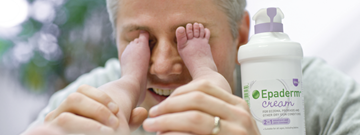Brūču kontaktslānis
Mepitel
Saudzīgs abpusējs brūču kontaktslānis – līdz minimumam samazina sāpes pacientam pārsēja nomaiņas laikā.
Mepitel® ir saudzējošs brūces kontaktslānis ar abpusēju Safetac® pārklājumu – māzāk sāpju izraisoša oriģināla silikona līpvirsma. Tas izstrādāts tā, lai saudzīgi piekļautos ādai, nepielīpot mitrai brūces virsmai
Perforētā kontaslāņa uzbūve ļauj eksudātam netraucēti nokļūt sekundārajā pārsējā. Jūs to varat atstāt uz brūces, pielietojot lokālu ārstēšanu
- Patiesi netraucēta dzīšana – uz brūces pārsējs var palikt līdz pat 14 dienām
- • Neatstāj līpvielas atliekas brūcē un saglabā savas veiktspējas īpašības
Plašāka informācija par produktu
Kad lietot Mepitel
Mepitel ir brūcei nepielīpošs kontaktslānis ar tīklveida struktūru, kas nodrošina eksudāta brīvu aizplūdi sekundārā pārsēja, drošu fiksāciju un audu aizsardzību. Mepitel ir izstrādāts un klīniski sevi apliecinājis dažādu eksudējošu brūču aprūpē, tādu kā ādas plīsumi, ādas nobrāzumi, pēcoperāciju brūces, virspusēji I un II pakāpes apdegumi, plēstas brūces, ādas transplanti, diabēta pēdas čūlas, venozas un arteriālas čūlas. Tāpat Mepitel ir piemērots neeksudējošu brūču, tulznu un trauslas ādas aizsardzībai.
Mepitel vaļējā tīklveida struktūra gadījumos, kad tas ir klīniski indicēts, sniedz iespēju lokālās terapijas līdzekļiem, uzklātiem uz kontaktpārsēja, nokļūt uz brūces
Mepitel var lietot kopā ar Mesorb® vai arī – izteikti eksudējošu brūču gadījumos – kopā ar Mextra® Superabsorbent pārsējiem; kopā ar Tubifast® fiskācijas sistēmu; un arī zem kompresijas pārsējiem. Mepitel var lietot arī apvienojumā ar Negatīvā Spiediena Brūču Terapiju (Negative Pressure Wound Therapy - NPWT)
Kā lietot Mepitel
Skatieties, ka uzklāt Mepitel pārsēju.
Produkta sortiments
| Art. nr. | Izmērs, cm | Gab. iepakojumā | Gab.skaits transportkastē |
| 290510 | 5x7,5 | 10 | 50 |
| 290710 | 7,5x10 | 10 | 40 |
| 291010 | 10x18 | 10 | 70 |
| 292005 | 20x30 | 5 | 30 |
Mölnlycke saistītie produkti
'Atsauces'

 Mepitel brūču kontaktslānis ar Safetac
Mepitel brūču kontaktslānis ar Safetac











